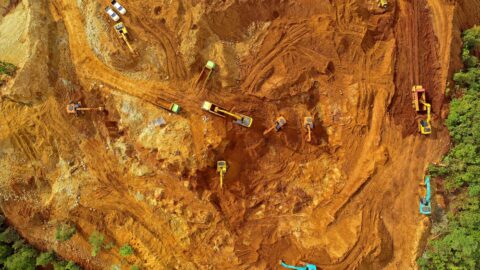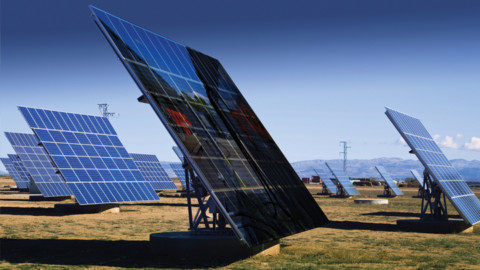The Australian Energy Market Operator (AEMO) has shared its thoughts on the challenges to generation connection in the area of Victorian and NSW power system bounded by Ballarat, Dederang, and Darlington Point, known as the ‘West Murray’ zone.
AEMO said Australia’s power system and the energy industry more broadly has been transforming faster than ever before. Over the past three years in particular there has been a significant increase in large-scale wind and solar generation investment, which AEMO sees as the lowest cost replacement for older power stations that are expected to retire over the coming years.
Successfully integrating renewable generation is a key factor in minimising the cost of the energy transition and reducing the emissions reduction from the energy sector.
New technology wind and solar generation is connected to the grid via software-controlled power electronic interfaces. At present, the technologies installed in the National Electricity Market (NEM) need minimum levels of ‘system strength’ in the local network to operate in a stable way.
System strength is provided by nearby ‘synchronous’ machines (like conventional generators), and by strongly interconnected high voltage transmission links.
AEMO said connecting more wind and solar generation where system strength is very low presents significant challenges, as their responses to network faults can interact with each other to cause unacceptable voltage oscillations.
These issues are emerging in remote areas throughout the NEM and are currently most serious in the West Murray zone (covering north-west Victoria and south-west NSW, roughly between Ballarat, Dederang, and Darlington Point).
The extent of these issues has become apparent with the advanced and very detailed modelling capability now essential for technical assessments in weak areas of the grid.
Other challenges for projects seeking connection in the West Murray zone include thermal limits and voltage stability limits that restrict the amount of power that can be transferred. Currently operational wind and solar projects in the zone total about 1,700MW, with a further 600MW commissioning.
Around another 2,300MW of projects are committed. In ideal conditions, the maximum thermal network transfer limit for the West Murray region is only 1,700MW.
According to AEMO, this means generation output in the area will increasingly have to be restricted to avoid breaching limits. The same constraints could also make it more difficult for new projects to be commissioned up to their full rated capacity in a timely manner.
These issues will impact the viability of individual projects, and more broadly they may delay the pace and increase the cost of the NEM’s energy transition overall as a result of the increased risk profile for investors.
In the long-run, the AEMO suggests the NEM needs ongoing investment in renewable generation that can be securely and efficiently integrated into the grid. Currently, in the West Murray zone, although wind and solar resources are abundant, the grid is not designed to support the amount of generation seeking connection either securely or efficiently.
A significant proportion of that generation in the West Murray is at risk of not being able to connect to the current system. Similar situations are emerging in other parts of the NEM.
If a generator wants to connect a new facility in the NEM it must (i) fund the work needed to create the connection and (ii) meet the cost of upgrading the surrounding network or its own generating system or to overcome any adverse impacts caused by the connection.
At the moment, a Network Service Provider (NSP) can only invest in network augmentations or upgrades if the investment would deliver wider, measurable net benefits to users as a whole.
AEMO has started to take a multi-pronged approach to address the issues outlined here. Here are some of the key points:
Short term actions:
- AEMO declared a 312 MVA fault level shortfall (or system strength gap) at Red Cliffs in the West Murray zone in December 2019, and in January 2020 started a procurement process seeking system strength services. Closing this gap will provide additional system strength to support operating and commissioning wind and solar generation. It won’t cover new projects that, under the National Electricity Rules, must fund additional measures to remediate the system strength impact of their own connection
- AEMO is testing a PSCAD modelling platform designed to allow AEMO to finally share access to full system models with a limited number of project proponents, while maintaining the confidentiality of the underlying source information
- Encouraging project developers to investigate the possibility of combined connections groups (potentially in collaboration with the CEFC). These might allow participants to increase the capacity that can be securely integrated by coordinated control system tuning, or developing scale-efficient, shared cost and benefit solutions to system strength/thermal constraints
- Grow AEMO’s account management capability and further improve the structure of AEMO’s connection teams by separating the Victorian TNSP function from the NEM Advisory function for Victorian transmission connections. This focuses the responsibilities of each function and better aligns Victorian transmission connections with the rest of the NEM
Long-term actions:
- Explore and develop novel technical solutions to connection issues with appropriate groups of proponents, equipment manufacturers and industry representative groups (e.g. Clean Energy Council)
- Ongoing validation of system models with a view to facilitating operation closer to actual system capability through more online monitoring equipment and more frequent and systematic system tests
- Together with the other market bodies and industry, review potential alternatives to the current connections regime that are better suited to current and emerging system requirements
- Support the development of efficient transmission network augmentations and non-network solutions (e.g. virtual transmission lines) through the Integrated System Plan and regulatory investment test processes
For more information, click here.
















